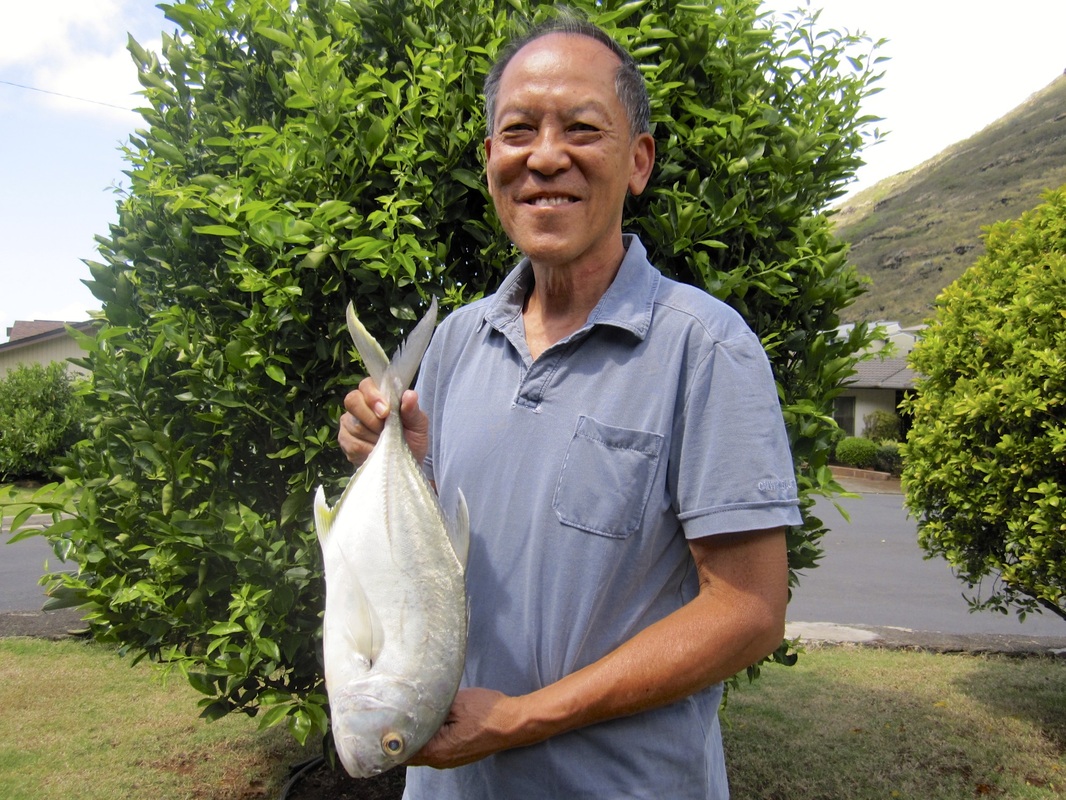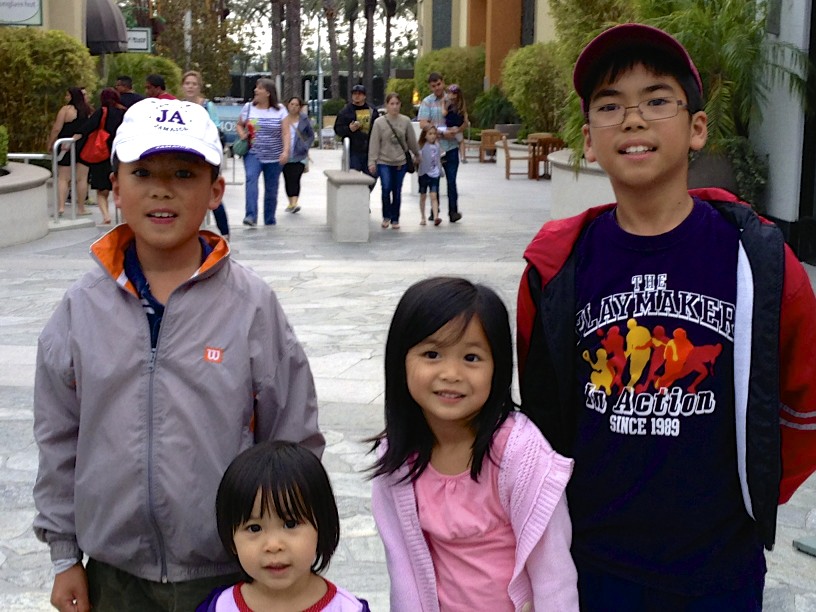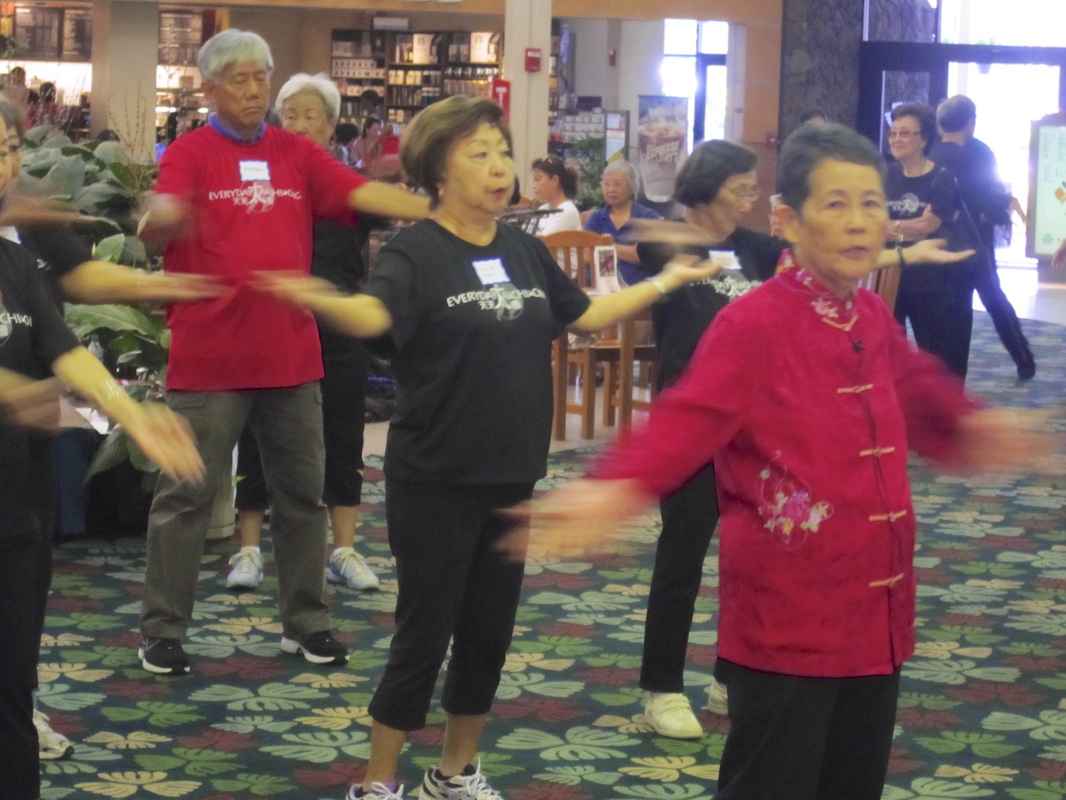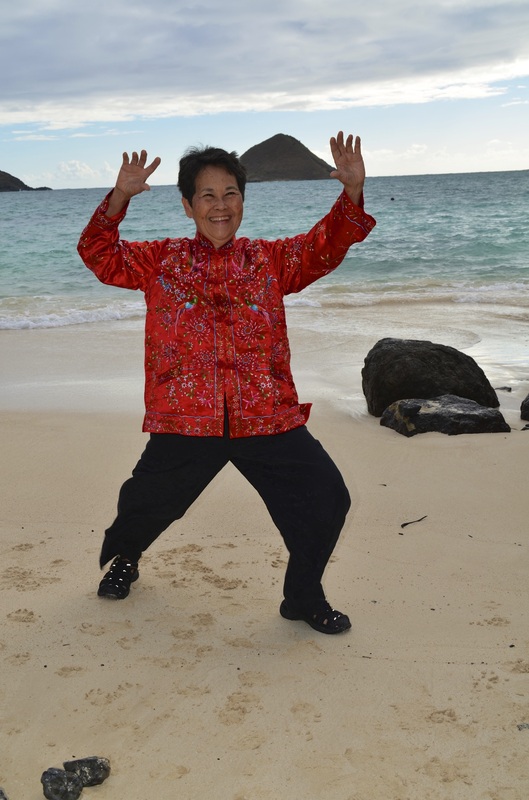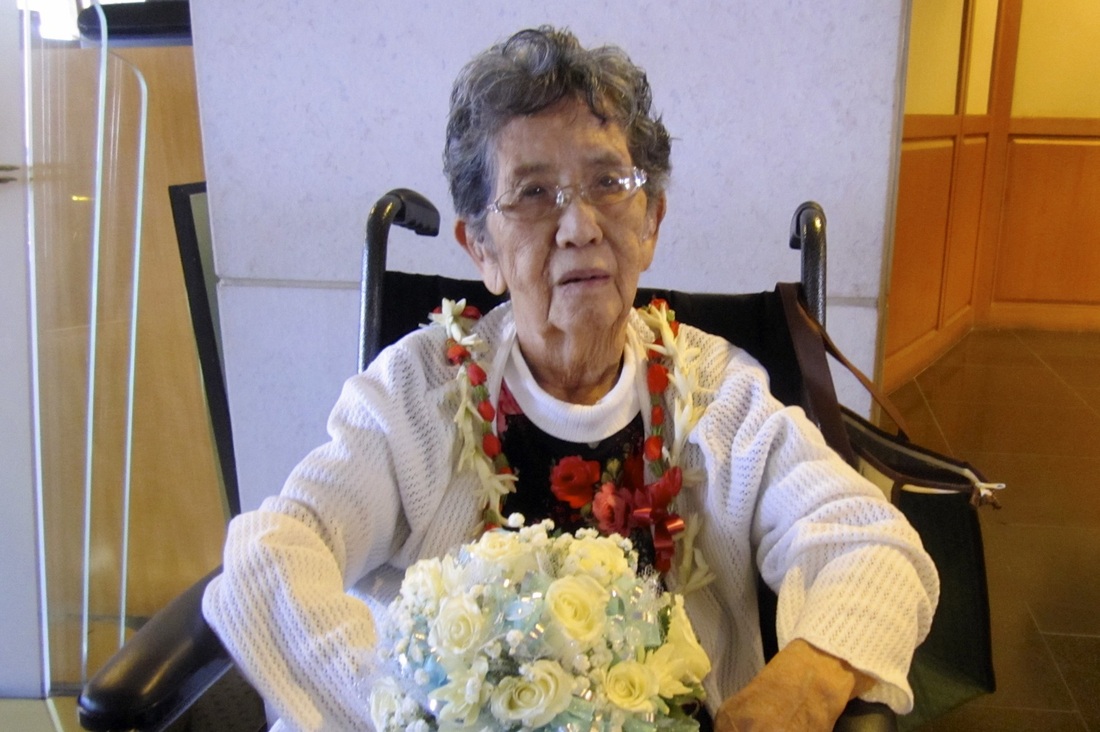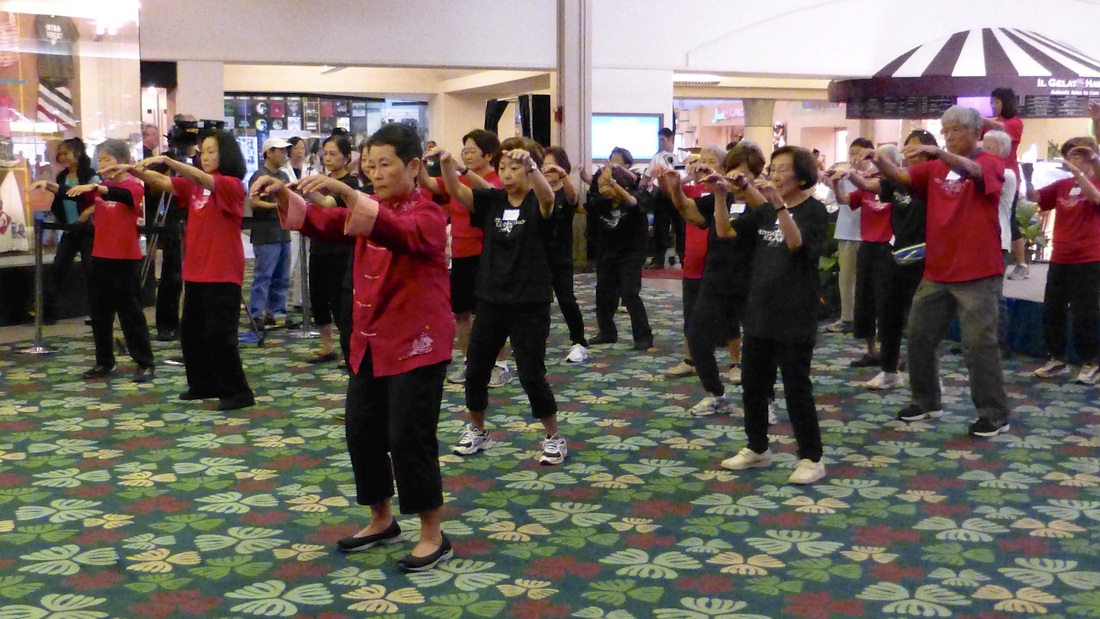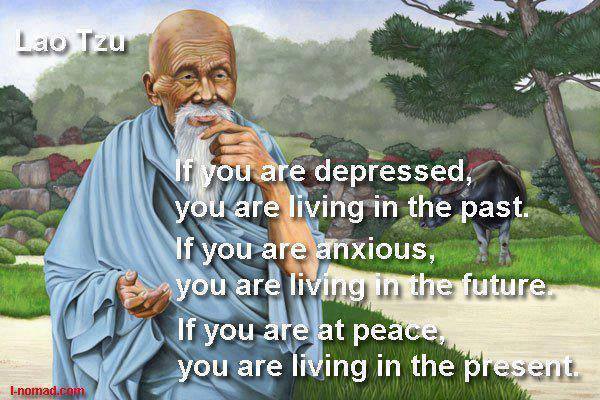|
3 Things Happy People Understand
Posted: 05/27/2014 8:36 am EDT Updated: 2 hours ago Print MORE: Vulnerability Health Emotional Wellness Happiness Tips Happiness Happy People Happy Tips Happy People Tips Emotional Wellness Tips If today is like every other day, you will be inundated with messages about what you need in order to be happy. And all these things will be things. Products you need so you can look right, or feel right or smell right. But Happiness Is an Inside Job, as Sylvia Boorstein writes in her best-selling book. And it really is. We can get so caught up in chasing brass rings, making deadlines, dieting, and waiting for vacations that we truly forget to live. Here are three reminders so that you don't get caught up in the insanity, and miss all the beauty that happens in each day. 1. There's only one you. We have roughly 7 billion people on this planet, but we only get one you. That's pretty amazing when you stop to think about it. There are somewhere between 30-100 trillion cells that come together to make up the person known as "you," and these cells have never, and will never, come together again in exactly the same way. You have your memories and your experiences and your outlook. You have your particular gifts to share, your unique perspective, your beautiful, tender heart. If you don't sing your song, the world will be robbed of notes only you can provide. Don't allow yourself to get caught up in being, looking, feeling and smelling like everyone else. Just be you. 2. What other people think is none of your business or concern. We can get so bogged down in worrying about how we might be judged. First of all, most people have enough work to do keeping their own side of the street clean. And as Eleanor Roosevelt famously said, "You wouldn't worry so much about what others think of you if you realized how seldom they do." Secondly, you're the one living your life. At the end of the day when you're looking in the mirror as you're brushing your teeth, you're either looking at a friend, or a stranger. When we deny what's true for us in order to please other people, or to live up to some idea of how we think we should be, we betray ourselves. Doubt and fear are normal emotions we'll all experience, but when we allow those feelings to stop us from living life in a way that feels good to us, we feel lost and alone. It's impossible to find our way when we repress or deny our intuition. 3. Being vulnerable is part of being human. This is tough to swallow for so many people, but it's reality. We have these bodies with their unknown expiration dates. Every single person we love is in the same boat. We never know what might happen from one day to the next. These truths can fill you with fear, or they can inspire you to live and love with your heart wide open, every single day. So you make sure the people in your life know how you feel about them. So you don't hold onto grudges, or focus on ways you've been slighted or wronged. Life is too short for that. If you're in a relationship that brings you nothing but pain, you'll have to get out, because life is too short for that, too, and because you can't shine your light if you're participating in something that crushes it. You have this one life. I think the idea is to leave nothing in the tank, to share all the love you've got for as long as you have to give it. We're culturally trained to think in terms of milestones and markers. We'll be happy when we graduate from a good school, get a great job, meet the right person, buy a big house, lose those 10 pounds. The truth is, life is made up of moments. Connection, love, laughter, giving from your heart, affection, a hug from your little one or your partner, your brother, your best friend, the feeling of the sun on your face, passing but real connection with a total stranger -- all these moments are so filled with beauty. If you can string together a bunch of beautiful moments, you'll have an incredible day. And if you string together a bunch of days like that, you'll have an amazing life. Heidi Godman Regular exercise changes the brain to improve memory, thinking skills POSTED APRIL 09, 2014, 5:00 PM Heidi Godman, Executive Editor, Harvard Health Letter Woman tying walking shows There are plenty of good reasons to be physically active. Big ones include reducing the odds of developing heart disease, stroke, and diabetes. Maybe you want to lose weight, lower your blood pressure, prevent depression, or just look better. Here’s another one, which especially applies to those of us (including me) experiencing the brain fog that comes with age: exercise changes the brain in ways that protect memory and thinking skills. In a study done at the University of British Columbia, researchers found that regular aerobic exercise, the kind that gets your heart and your sweat glands pumping, appears to boost the size of the hippocampus, the brain area involved in verbal memory and learning. Resistance training, balance and muscle toning exercises did not have the same results. The results were published this week in the British Journal of Sports Medicine. The finding comes at a critical time. Researchers say one new case of dementia is detected every four seconds globally. They estimate that by the year 2050, more than 115 million people will have dementia worldwide. Exercise and the brain As I write in the May 2014 Harvard Health Letter, exercise helps memory and thinking through both direct and indirect means. The benefits of exercise come directly from its ability to reduce insulin resistance, reduce inflammation, and stimulate the release of growth factors—chemicals in the brain that affect the health of brain cells, the growth of new blood vessels in the brain, and even the abundance and survival of new brain cells. Indirectly, exercise improves mood and sleep, and reduces stress and anxiety. Problems in these areas frequently cause or contribute to cognitive impairment. Many studies have suggested that the parts of the brain that control thinking and memory (the prefrontal cortex and medial temporal cortex) have greater volume in people who exercise versus people who don’t. “Even more exciting is the finding that engaging in a program of regular exercise of moderate intensity over six months or a year is associated with an increase in the volume of selected brain regions,” says Dr. Scott McGinnis, a neurologist at Brigham and Women’s Hospital and an instructor in neurology at Harvard Medical School. Put it to the test So what should you do? Start exercising! We don’t know exactly which exercise is best. Almost all of the research has looked at walking, including the latest study. “It’s likely that other forms of aerobic exercise that get your heart pumping might yield similar benefits,” says Dr. McGinnis. How much exercise is required? The study participants walked briskly for one hour, twice a week. That’s 120 minutes of moderate intensity exercise a week. Standard recommendations advise half an hour of moderate physical activity most days of the week, or 150 minutes a week. If that seems daunting, start with a few minutes a day, and increase the amount you exercise by five or 10 minutes every week until you reach your goal. If you don’t want to walk, consider other moderate-intensity exercises, such as swimming, stair climbing, tennis, squash, or dancing. Don’t forget that household activities can count as well, such as intense floor mopping, raking leaves, or anything that gets your heart pumping so much that you break out in a light sweat. A study published in the January 2014 Journal of the American Geriatrics Society found that a exercise called tai chi showed the potential to enhance cognitive function in older adults, especially in the realm of executive function, which regulates, controls, and manages other cognitive processes such as planning, working memory, attention, problem-solving, and verbal reasoning. That may be because tai chi, a martial arts that involves slow, focused movements, requires learning and memorizing new skills and new movement patterns. Spring Cleaning for Your Soul
Posted: 05/23/2014 8:16 am EDT Updated: 05/23/2014 8:59 am EDT Print ArticleSPRING ALLERGY MORE: Healthy Living Cleanse Spring Spring Cleaning Janet Neal The Superbwoman Realignment Soul Cleaning We all need to spruce up after a long, trying winter. There are gardens to plant, closets to clean and clothing to swap. But while cleaning up your outsides, don't forget the most important part: your inner soul. Here's a guide to doing a "spring cleaning" of your spirit! 1) Start With Gratitude Always, always, always! Gratitude clears the path for positive energy to flow, both to and from you. Try a nightly gratitude list of 5-10 things that happened that day. It will keep you consciously on the lookout throughout the day for the good things, improving your attitude in the process. 2) Attitude And speaking of attitude, check to see if yours might need a little readjustment. The winter doldrums and hibernation make it easy for us to see the glass a bit more empty. If you find yourself complaining more than usual, check to see if this might be a habit you've acquired that is worthy of a spring toss-out. And if all else fails, go back to #1. 3) Values Values are our building blocks -- they are the foundation of what makes us "us." When was the last time you wrote yours down? A good thing to do is to make a list of your top 10 values and post them -- on your refrigerator, your desk, your bathroom mirror. This way, the next time you have to make a decision, your values will show you the way. 4) Service Being of service helps both you and those you serve. By giving back you are raising your vibration and putting out positive energy. And serving gets you out of your head -- someplace that can at times be a dangerous neighborhood. 5) Connections Make sure that your winter hibernation has not turned into spring isolation! As Diana Ross would say, reach out and touch somebody's hand! Or do it virtually. Reconnect with those that make you feel better. Take a look at the relationships in your life and see if a little weeding may be in order. Positive relationships give you energy and negative... well, they just aren't worth it. 6) Mind the Temple It's easy to cut yourself some slack during the winter in regards to your eating and exercise routines. After all, those big sweaters can hide a multitude of sins! But remember that your body is your temple, and deserves to be treated as such. Get back to a healthy lifestyle and it will thank you for it! 7) Sleep It's not a luxury, it's a necessity! You need your sleep to stop the flow of those stress hormones, and to renew and refresh your organs, including your brain. With a good night's sleep, your body is better able to respond and act appropriately on your behalf. It even helps with losing weight! 8) Laughter As the proverb says, "If you are too busy to laugh, you are too busy." Laughter, besides being enjoyable, has several positive benefits. It strengthens the body's ability to fight disease, it can reduce blood pressure, and it can increase energy levels. And it helps us bond with others -- see #5. 9) Nature Now that the weather is better, you can get outside and enjoy nature. Spring brings so much rebirth and beauty. Being out in it renews the spirit and works to stimulate that part of the brain associated with balance and happiness. Exercise also seems less stressful when done outside in nature -- see #6! 10) Practice, practice, practice How do you get to Carnegie Hall? The same way you get to spiritual enlightenment: practice, practice, practice. Life doesn't happen in a day, nor is it done perfectly. Establish a daily spiritual practice that works for you. And if you fall off the beam? Get right back on and try again. It's all about the journey and you might as well make it a good one! Happy cleaning! ... such a dynamic speaker with a message that transcends time and culture everydaytaichi bookmark favorite: How to Live to Be 110: Supercentenarians' Secrets of Longevity5/20/2014 How to Live to Be 110: Supercentenarians' Secrets of Longevity
Posted: 05/20/2014 7:07 am EDT Updated: 4 hours ago MORE: Long Life Healthy Living Longevity Living Longer Aging Gracefully Health Healthy Living News In the Andes Mountains of Peru, living in extreme poverty, Filomena Taipe Mendoza, 116 years old, is in the running to become the world's oldest living person. If her claim proves to be true, it would make her three months older than Misao Okawa of Japan, who currently holds the record for the oldest living person according to Guinness World Records and the Gerontology Research Group. 2014-05-10-mendoza.jpg Image Source: AFP Mrs. Mendoza lives in the tiny village of Huancavelica, one of the poorest cities in Peru. Her age was reportedly discovered when she left her village to pick up a new type of retirement check for seniors living in poverty. BBC News reports that Peru's National Identity Register claims that her ID card indicates that she was born on December 20, 1897. "I am not of the past century, young man, but the other one... I am very old," she told an official accompanying her to cash her first check according to Agence France-Presse (AFP). Eat From the Garden, Don't Eat Processed Food What is Filomena Taipe Mendoza's secret to such a long life? According to BBC News, she attributes it to the following: Eating a natural diet of potatoes, goat meat, sheep's milk, goat cheese and beans Cooking only items she grows from her own garden Never eating processed foods While we wait for officials from Guinness World Records and the Gerontology Research Group to verify Mrs. Mendoza's claim, we can take this opportunity to spotlight the rare group of individuals known as supercentenarians in order to learn their secrets for living long and healthy lives. Supercentenarians are the elite group of people who have reached the 110-year milestone. According to the Gerontology Research Group (GRG), there are 74 verified living supercentenarians in the world and 71 of them are female. The GRG reports that there are probably hundreds more supercentenarians that have yet to be verified. Lots of Sushi and Lots of Sleep Leading the pack is Misao Okawa. According to Guinness World Records, she is the current verified oldest living person at 116 years and 64 days. She was born on March 5, 1898, at a time when Queen Victoria was still on the throne. 2014-05-10-MisaoOkawa.jpg Image Source: Reuters She resides in Osaka with her two daughters, one son, four grandchildren, and six great grandchildren. So what is Misao Okawa's secret to longevity? Guinness World Records reports that she attributes it to the following diet and lifestyle: Three large meals a day Eight hours of sleep a night Lots of sushi Misao Okawa's advice is rather simple. "Eat and sleep and you will live a long time," she said in an interview to The Telegraph, "You have to learn to relax." In addition to her regimen of sleep and sushi, Mrs. Okawa maintains a healthy lifestyle of physical activity. The Telegraph recounts one remarkable story of her strength of body and character. When she was 102, she fell and broke her leg. After returning to the nursing home from the hospital, she was seen doing leg squats to help herself recover. Mrs. Okawa is a prime example of Japan's healthy aging citizens. According to the GRG, Japan boasts the highest population of verified supercentenarians in the world. In John Robbin's book Healthy at 100, he talks about the specific group of centenarians in Okinawa, Japan, the place where more people live to 100 than anywhere else in the world. In fact, fifteen percent of the world's documented supercentenarians live in Okinawa. In his book Robbins describes the Okinawan Centenarian Study, which researched human longevity from a group of over 900 centenarians. The study found that, first, genetics was an important factor for longevity. In addition to genetics, cultural habits such as hara hachi bu (eating only until being 80 percent full) and the maintenance of a healthy lifestyle by keeping physically active were key reasons that Okinawans retained remarkable health. While Misao Okawa is the oldest living person, she does not hold the record for being the oldest person ever recorded. That title goes to France's Jeanne Calment according to Guinness World Records. Mrs. Calment died on August 4, 1997 at the impressive age of 122. Eat Two Pounds of Chocolate and Take Up Fencing Jeanne Calment was born in February 21, 1875, in Arles, France. Her date of birth falls one year before Alexander Graham Bell patented the telephone. In her New York Times obituary, it recounts how in her preteens she met Vincent Van Gogh, describing him later as ''very ugly, ungracious, impolite, sick -- I forgive him, they called him loco.'' 2014-05-10-JeanneCalment.png Mrs. Calment at age 22 in 1897 and at age 122 in 1997 Her secret to staying young as reported in her obituary was a most unconventional list of diet and lifestyle habits: Drinking Port wine Eating two pounds of chocolate per week Treating her skin with olive oil Taking up fencing at 85 Riding her bike until she was 100 Smoking until she was 117 Yet despite her smoking and addiction to chocolate, her long life continued to surpass expectations. As recounted in her obituary, to one man's financial disappointment her age not only surpassed his expectations but also his own lifespan. When Mrs. Calment was 90, lawyer André-Francois Raffray, bought the apartment in which Mrs. Calment had lived. However, there was one provision. He would have to pay her 2,500 francs a month (the equivalent of $400 today) until she died and then the apartment would belong to him. He agreed. Year after year after year Mr. Raffray paid the monthly allowance, and Mrs. Calment went right on living. At the age of 77, Mr. Raffray died and his widow continued to pay her. When Mrs. Calment died 32 years later, the total payment came to $180,000 -- more than double the original price of the apartment. Although Mrs. Calment, being the wife of a well-to-do shop owner, never had to work, this did not mean that her life was without hardships. Her husband died in 1942 after consuming a dessert of spoiled preserved cherries. Their daughter, Yvonne, had only one son, Frédéric Billot, whom Mrs. Calment raised after Yvonne died of pneumonia at age 36. In 1960, Frédéric Billot died, also at age 36, without children in an automobile accident. A Long Life Is One of Persistence, Not Just Attitude Living with and through tragedies is a theme found also in Filomena Taipe Mendoza's life in Peru. "I had a very hard life, I was a very young widow with nine dependent children and I worked hard to raise them. Only three of them are alive," she said to Peru's Ministry of Development as reported in Agence France-Presse. In their book The Longevity Project, the authors Drs. Howard Friedman and Leslie Martin consider what role tragedy and having a worry-free life plays in living longer. They discuss the findings of an eight-decade study of 1,528 participants that was begun by Dr. Lewis Terman in California in 1921. In reviewing the factors that have an effect on predictions of living longer, the authors state: "It was not those who took life easy, played it safe, or avoided stress who lived the longest." They explain that instead those who live longer had "an often-complex pattern of persistence, prudence, hard work, and close involvement with friends and communities." The authors explain that because of their perseverance they "found their way back to these healthy paths each time they were pushed off the road." If Filomena Taipe Mendoza's claim is verified, then as the oldest living person, her life really does exemplify this fact. Living in extreme poverty with her new pension check she will now receive about 250 nuevo soles (about $90) per month and obtain free medical care. According to Agence France-Presse, when asked if there was anything she wished for, she replied: "I wish I still had teeth." everydaytaichi lucy bookmark favorite: 31 Food Things Only People From Hawaii Would Understand5/17/2014 Over the past few years, meditation has evolved from an of-the-moment fad to a legitimate health craze, as research has linked the practice to everything from improved cardiovascular health to cognitive benefits. Science has even shown that mindfulness meditation can affect gene expression.
While the modern-day science behind this age-old practice is still developing, plenty of studies suggest that meditation is about way more than blissing out -- take a look at some of the possible benefits below, and scroll down for more information on each. Body Reduces Pain Several studies have identified a connection between meditation and pain. One Journal of Neuroscience study, for instance, showed that after four 20-minute meditation sessions over the course of four days, a group of volunteers rated the same burning pain as 57 percent less unpleasant and 40 percent less intense, Health.com reported. Plus, a review of 47 studies published in JAMA Internal Medicine earlier this year showed that meditation may be helpful in easing pain (though it was difficult for the researchers to identify exactly what type of pain, according to Reuters). Researchers speculate that those who practice meditation develop the ability to exert greater control over unpleasant feelings, including pain, by turning them down as if using a "volume knob" in the brain. Boosts immune system. One small 2003 study showed a link between an eight-week mindfulness meditation program and better immune function, and 2012 UCLA research suggested meditation could improve the immune system in older people. Lowers blood pressure. A study co-directed by Dr. Randy Zusman at Massachusetts General Hospital took patients being treated with typical high blood pressure medication and taught them a technique called the relaxation response; more than half experienced a drop in blood pressure, sometimes even resulting in reduced medication, NPR reported. "I'd been using medications in these patients, they were hopefully following my recommendations," Zusman told NPR. "[But] we still couldn't get their blood pressure under control. And I was somewhat skeptical that meditation could be the key to blood pressure control." What's more, the Mayo Clinic reports that research suggests meditation could be helpful in managing the symptoms of high blood pressure. Eases inflammation. In 2013 research at the University of Wisconsin-Madison and the Center for Investigating Healthy Minds in the Waisman Center, scientists identified a possible tie between mindfulness meditation and the relief of inflammatory symptoms among people who suffer from chronic inflammatory conditions. “This is not a cure-all, but our study does show that there are specific ways that mindfulness can be beneficial, and that there are specific people who may be more likely to benefit from this approach than other interventions," lead author Melissa Rosenkranz said in a statement. Reduces heart risk. A 2012 study published in the journal Circulation: Cardiovascular Quality and Outcomes showed a link between Transcendental Mediation and a reduction in heart attack, stroke and early death from heart disease in a group of African Americans, TIME reported. “The main finding [of our research] is that, added on top of usual medical care, intervention with a mind-body technique -- transcendental meditation -- can have a major effect on cardiovascular events,” lead author Robert Schneider, a professor at the Maharishi University of Management, told the publication. The American Heart Association also says that the stress-busting benefits of different types of meditation can be a boon to heart health. Mind Increases gray matter. Meditation may just be exercise for the brain. In fact, a 2009 study from UCLA researchers showed that MRI scans of long-time meditators revealed that certain parts of their brains were larger than those of a control group, particularly in regions known for emotion regulation. Another small study published in 2011 in the journal Psychiatry Research: Neuroimaging showed that an eight-week mindfulness-based stress reduction program resulted in increases in gray matter in the hippocampus and areas of the brain tied to compassion and self-awareness, U.S. News reported at the time. Cultivates willpower. Stanford health psychologist Kelly McGonigal, Ph.D. told Stanford Medicine's SCOPE blog in 2011 that both physical exercise and meditation can help train the brain for willpower: Meditation training improves a wide range of willpower skills, including attention, focus, stress management, impulse control and self-awareness. It changes both the function and structure of the brain to support self-control. For example, regular meditators have more gray matter in the prefrontal cortex. And it doesn’t take a lifetime of practice -- brain changes have been observed after eight weeks of brief daily meditation training. Builds focus and concentration. A 2010 study published in Psychological Science showed that Buddhist meditation improved focus and attention on a task that was designed to be both boring and demanding. "People may think meditation is something that makes you feel good and going on a meditation retreat is like going on vacation, and you get to be at peace with yourself," study author Katherine MacLean, who worked on the research as a graduate student at the University of California Davis, said in a statement. "That's what people think until they try it. Then you realize how challenging it is to just sit and observe something without being distracted." Boosts cognitive function. Another Psychological Science study identified a link between mindfulness training and increased standardized test scores, as well as improvements in working memory. What's more, Dr. Sara Lazar, a neuroscientist at Massachusetts General Hospital who studies mindfulness meditation, previously told HuffPost that regular meditation may stave off the thinning of the brain's prefrontal cortex, and in turn declines in cognitive function, later in life. Spirit Builds self knowledge. According to a 2013 article published in Perspectives on Psychological Science, mindfulness (defined as "paying attention to one's current experience in a non-judgmental way") can help people to understand their own personalities. "For example, one who overestimates the positivity of his or her personality or status is often disliked by others, whereas having insight into how others perceive the self and acknowledging one's flaws seems to attenuate the negativity of others' impressions," the researchers wrote in the study, as previously reported by HuffPost. Helps relationship satisfaction. As the American Psychological Association reports: Several studies find that a person's ability to be mindful can help predict relationship satisfaction — the ability to respond well to relationship stress and the skill in communicating one's emotions to a partner. Empirical evidence suggests that mindfulness protects against the emotionally stressful effects of relationship conflict (Barnes et al., 2007), is positively associated with the ability to express oneself in various social situations (Dekeyser el al., 2008) and predicts relationship satisfaction (Barnes et al., 2007; Wachs & Cordova, 2007). Increases compassion. A 2013 study from researchers at Northeastern and Harvard Universities suggested that meditation may be the key to unlocking compassion. The findings, which were published in the journal Psychological Science, showed that volunteers who underwent eight-week trainings in two types of meditation reacted more compassionately than those who hadn't meditated. Specifically, researchers set up a waiting room where an actor with crutches appeared to be in pain while other actors ignored her -- 15 percent of the non-meditators helped the person in pain, compared with 50 percent of those in the meditating group. "We know meditation improves a person’s own physical and psychological wellbeing," lead author Paul Condon said in a statement. “We wanted to know whether it actually increases compassionate behavior.” Improves empathy. A small study from Emory University showed that a compassion-based meditation program, called Cognitively-Based Compassion Training (CBCT), might help people to read others' facial expressions, HuffPost reported when the results were released in 2012. "These findings raise the intriguing possibility that CBCT may have enhanced empathic abilities by increasing activity in parts of the brain that are of central importance for our ability to recognize the emotional states of others," senior author Charles Raison said in a statement. Body & Mind Improves depression. The 2014 review of 47 randomized trials, published in JAMA Internal Medicine, showed that mindfulness meditation can be effective in easing depression for some patients, as well as anxiety, HuffPost previously reported. The researchers wrote: "Anxiety, depression, and stress/distress are different components of negative affect. When we combined each component of negative affect, we saw a small and consistent signal that any domain of negative affect is improved in mindfulness programs when compared with a nonspecific active control." And depression has been linked with other serious health conditions, including heart disease. Physically changes the brain. University of Oregon Research released in 2012 suggested that one type of Chinese mindfulness meditation could be associated with physical changes in the brain -- ones that might help stave off mental illness, HuffPost reported when the findings were released. Mind & Spirit Reduces loneliness. At least among older people. A 2012 Brain, Behavior and Immunity study of 40 adults between the ages of 55 and 85 showed that a two-month mindfulness meditation program was linked with reduced loneliness. "While this was a small sample, the results were very encouraging," Dr. Michael Irwin, a professor of psychiatry at the Semel Institute for Neuroscience and Human Behavior at UCLA and director of the Cousins Center, said in a statement when the findings were released. "It adds to a growing body of research that is showing the positive benefits of a variety of meditative techniques, including tai chi and yoga." Cuts emotional reactivity. The American Psychological Association reports: Research also supports the notion that mindfulness meditation decreases emotional reactivity. In a study of people who had anywhere from one month to 29 years of mindfulness meditation practice, researchers found that mindfulness meditation practice helped people disengage from emotionally upsetting pictures and enabled them to focus better on a cognitive task as compared with people who saw the pictures but did not meditate (Ortner et al., 2007). Like pain, researchers have suggested that mindfulness meditation helps the brain to have better control over sensations, including negative emotions. Body & Spirit Fosters a healthy body image. Australian research published in Clinical Psychologist suggested that being mindful (which can be cultivated through mindfulness meditation) may be linked to having a healthier relationship with food and your body, Berkeley's Greater Good reported. Body, Mind & Spirit Eases stress and anxiety. The review of studies from Johns Hopkins University researchers that was published earlier this year in JAMA Internal Medicine showed that mindfulness meditation may improve anxiety for certain people. "If you have unproductive worries," Dr. Elizabeth Hoge, a psychiatrist at the Center for Anxiety and Traumatic Stress Disorders at Massachusetts General Hospital and an assistant professor of psychiatry at Harvard Medical School, told Harvard Health Letter, “...You might think ‘I’m late, I might lose my job if I don’t get there on time, and it will be a disaster!’ Mindfulness teaches you to recognize, 'Oh, there’s that thought again. I’ve been here before. But it’s just that -- a thought, and not a part of my core self.'" The Mayo Clinic also reports that many people control stress by practicing mindfulness meditation (plus it's been linked with lower levels of the stress hormone cortisol) -- for the basics on how to get started, click here. Helps sleep. Research presented at the 2009 Annual Meeting of the Associated Professional Sleep Societies suggested that meditation could be helpful in the treatment of insomnia. "Results of the study show that teaching deep relaxation techniques during the daytime can help improve sleep at night," principal investigator Ramadevi Gourineni, M.D., director of the insomnia program at Northwestern Memorial Hospital in Evanston, Ill., said in a statement. Plus, a University of Utah study released last year showed a connection between mindful personality traits and improved sleep quality. Check out four meditation techniques for improved sleep here. Brand NEW SUMMER 2014 Tai Chi Classes in East Honolulu, Hawaii Yang Style Tai Chi: 24 Short Form and 10 Form Tai Chi Classes in Honolulu, Hawaii at Kilauea District Park by everydaytaichi by lucy chun NEW Classes will begin June 9 Monday 530PM June 10 Tuesday 900AM June 12 Thursday 9AM and 10AM If you would join us, email me at [email protected] 1. Introduction: for brand new students who have NO experience Mondays 5:30-6:30PM (10 weeks) Yang 10 Form Thursdays 9-10 AM (10 weeks) Yang 24 + 10 Forms 2. Novice/INTRO: for those students who have either- little experience and no experience Thursdays 10-11AM (10 weeks) Yang 24 Short Form + 10 Form 3. Beginners: for all students who have varying degrees of experience Tuesdays Class 9-10 AM (10 weeks) Yang 24 + 10 Form for more info on classes, email me at [email protected] Summer 2014 Registration at Kilauea Park: May 19, Monday: 6-8pm May 20, Tuesday: 2-5pm May 21, Wednesday: 2-5pm if you miss the above dates, and would like to join us, email me at: [email protected] Randy Taran Become a fan
Author, Producer and founder of Project Happiness 10 Things Creative People Do Posted: 05/12/2014 8:18 am EDT Updated: 05/12/2014 9:59 am MORE: Distilled Perspective Friendship The Balanced Life Mindfulness Creative People Innovation The Inner Life Happiness Have you ever wondered why some people are more creative than others? Did you ever wish that you had more of that particular gene? The good news is that research shows that happiness and creativity are not only related, they can be developed. Here are 10 ways to jumpstart your creativity, starting now: 1. Listen In: Listen to your intuition and capture your new ideas. Whether from your morning shower, nighttime dreams, when running, in the car, or in nature, keep an idea notebook and jot it down. 2. Mind Your Mindset: When you start something new, you can either choose to put yourself down and succumb to the inner critic (fixed mindset) or enjoy the process of creation (growth mindset). 3. Get in the Flow: Focus on the moment rather than the goal. When you are totally immersed in a creative activity, when hours feel like moments, you open to tapping into something bigger than yourself. Let it flow through you. 4. Let Your Senses Come Alive: Notice not only how things look, but how they feel in your hand, how they smell, the sounds surrounding you, even the nuances of taste. Don't forget to listen to your gut -- that's an important sense too! 5. Happiness Spurs Innovation: Sadness inhibits innovative ideas, causing people to exercise more restraint, but happiness expands creative thinking, fresh associations and new perspectives. Remember to take a break and make time for fun! You'll come back refreshed. 6. Gratitude Rules: Being grateful for where you're at and "taking in the good" helps sculpt your brain's neural pathways to receive more of it. Imagine what you are creating. Like an athlete training for peak performance when you visualize something special, your can embody it even more. 7. Seek Out Challenging Tasks: Just for fun, challenge yourself with projects that don't have solutions, like how to make a horse fly (no -- we're not talking unicorns) or build a perfect model of a part of the body. This opens the mind for all types of strategies, which helps generate fresh ideas. 8. Surround Yourself With Interesting People and Things: Spend time with diverse friends, listen to new music, see new exhibitions to broaden your horizons. Having unusual objects around you also helps you develop original ideas. 9. Learn Something New: By taking a class outside your typical area of interest, you can have a wider range of ideas to draw from and interconnect. Research shows that connecting in new ways is the basis for all creative thought. 10. Know Your Strengths and Passions: Get to know what makes your heart soar, what makes you feel most alive and energized, and use it as fuel for the creative process. By nourishing your creative side, you'll bring happiness not only to yourself but to those around you. You'll also know what you had inside yourself all along. What do you do to tap into your creativity? |
Lucy's BLOG
Archives
October 2020
Copyright 2009 vmnproduction |
